Visit our social media for
updates and information about the
Borrego Springs
Hawkwatch |

 |
|
|
Migration of the Swainson's Hawk |
Hawkwatch The Documentary |
Each spring in Borrego
Springs provides a window into the migration patterns of
Swainson’s Hawks. (photo) The hawks spend the winter in
Mexico, Columbia and Argentina. In early to mid-February the
first Swainson’s Hawks arrive in the Borrego Valley from
Mexico. As the season progresses the hawks arrive from
Columbia, and finally in April, from Argentina. The journey
from Argentina is over 6,000 miles. The highest period of
migration through Borrego Valley is mid- to late March.
During a typical migration there are many thousands of
hawks passing through, sometimes hundreds in the sky at the
same time. Many of these hawks nest in central and northern
California, but some travel to other parts of the western
US, into central Canada, and even a few nest in Alaska.
It is a story of hawks, caterpillars, flying ants,
grasshoppers and springtime flowers. The hawks come to feast
on the caterpillars of the White-lined Sphinx Moth, flying
ants of several species, Gray Bird Grasshoppers and other
insects.
| Volunteer and be a part of the Hawkwatch |
| Join the Hawkwatch and be a
volunteer. experience a natural phenomenon and
become a Citizen Scientist. Volunteers participate
in the several aspects of the Hawkwatch, from
spotting and counting Swainson’s Hawks in the air,
to providing information to visitors, to scouting
for roosting hawks in the morning, etc. Beginning
and experienced hawkwatchers are encouraged to
participate! Any length of time is okay, just one
day, or weeks of participation. |
|
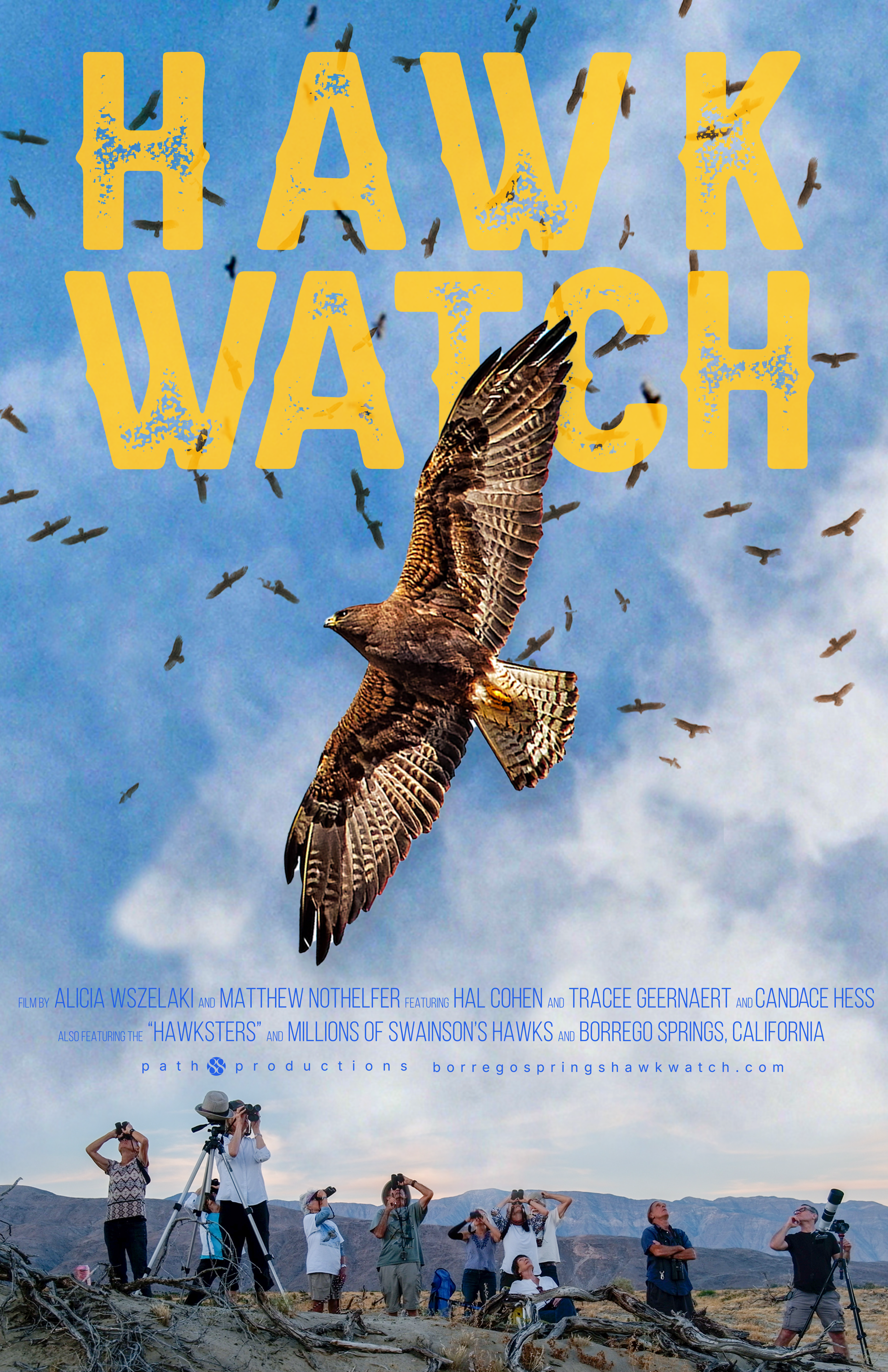 |
|
|
|
Join the Borrego Valley Hawkwatch!
by Hal Cohen,
Hawkwatch Founder & Coordinator |
We are one of
only two hawkwatches in California! And, we observe
more Swainson’s Hawks migrating through North
America in spring than any other site in the US and
Canada.
-We maintain the watch from the third
week of February through the middle of April
-We
watch every day, counting migrating hawks in the
morning, typically 8:00-11:00. Raptors seen
migrating during that period are reported to Hawk
Migration Association (HMA) through their website
“Hawkcount.org”.
-We also hold watch every
evening from about an hour before sunset until dark.
The purpose of the evening watch is to learn the
approximate number of Swainson’s Hawks that enter
the valley to roost overnight, and to see which
locations in the valley the hawks settle into for
the night.
-The morning site is located on
Digiorgio Rd, 2.8 miles north of the junction with
Palm Canyon Drive.
-The evening site is located
on Borrego Valley Rd. 1.8 miles north of the
junction with Palm Canyon Drive (see map insert)
-We report all observed migrating raptors, as well
as migrating Turkey Vultures |
 |
-Mid-March to mid-April is the highlight period of
migration
-Swainson’s Hawks often fail to read
the memos, and arrive at very unexpected times!
-The Borrego Valley Hawkwatch is unique in two ways:
1) The hawks enter the valley in the evening and
stay overnight, and sometimes feed in the morning,
either on the ground or in the air before migrating
out of the valley.
2) One raptor species is
predominant, as very few other raptors migrate
through Borrego Valley |
| Beginners and experienced hawkwatchers are encouraged to
participate! We hope you can make at least one of these dates. But
if you can’t, you are still welcome to get involved. We count hawks
from February 21 into April every spring season. Join us to
experience a natural phenomenon and become a Citizen Scientist. |
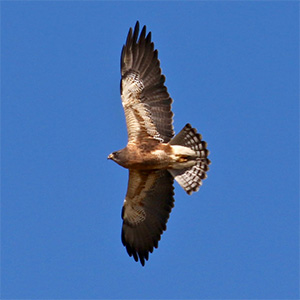 |
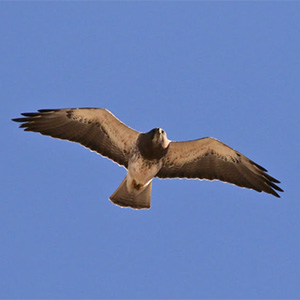 |
 |
Adult Dark Rufous
SW- Frimmel Smith |
Adult Light Morph
SW-Frimmel Smith |
Adult Female Morph
SW-Tom Hamilton |
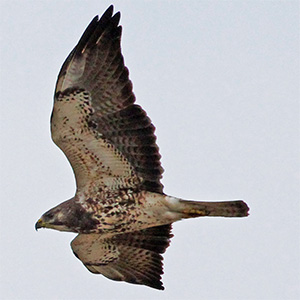 |
 |
 |
Subadult Light Intermediate
SW Ted Springs jr. |
Sub-adult Dark Morph
SQ-Frimmel Smith |
Adult Male Light Morph
SW-Kwan Choo |
|
|
 |
A Brief History of the Hawkwatch |
Hal and Joanne Cohen moved to Borrego Springs in 2001.
Hal’s wife soon noticed that Hal was missing the regular
hawk watching activities that he had enjoyed so much while
living and teaching in Illinois. Hawkwatching to him is much
more than looking at hawks. Hawkwatching is counting
hundreds of hawks in the midst of migration.
In early
March of 2003 Hal noticed some Turkey Vultures roosting in
Eucalyptus trees at the Roadrunner Club in Borrego Springs.
They were not hawks but he figured, “What the heck”, he
would start a Turkey Vulture watch. He followed Turkey
Vultures as they circled upwards, called “kettling” in
hawkwatch lingo. One day when Hal had come to watch Turkey
Vultures, he noticed a dozen hawks kettling; not Turkey
Vultures this time, but Swainson’s Hawks! On that fateful
day true hawkwatching became a reality in Borrego Springs,
and has continued for 22 years. Every year anywhere from
about 1,600 to 16,000 migrating Swainson’s Hawks have been
counted.
Hal has been the foundation of the Borrego
Valley Hawkwatch consistently through this entire period,
developing a dedicated team to cover the watch. He has, as a
true leader, prepared the team for the time, soon to come
when he will be known as Borrego Valley Hawkwatch Leader
Emeritus! But rest assured, he will still be spotting and
counting hawks on the hill.
|
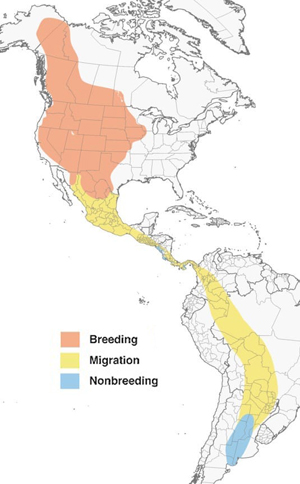 |
The Hawkwatch |
Mid-March to
March 30th is the highlight period of migration. In
March 2019 we waited patiently for the vanguard of the Swainson’s
migration. We waiting alongside a BBC film crew here to document
the arrival of the hawks for The BBC’s “Green Earth.” But we all
waited in vain as each day produced blank skies. When birds
finally arrived, in massive numbers in early April, the BBC crew
had just left. For two weeks hundreds of hawks darkened the sky
from the airport in Borrego Springs to Henderson Canyon Road. A
typical kettle produced well over 200 hawks spinning around like a
tornado. The unofficial number of hawks that moved through was
close to 8,000! We have an official count protocol, but because
many of the trained volunteers had left due to the bird’s late
arrival, the official count was just over 1,000. With additional
support from Anza Borrego Desert Natural History Association in 2020
we hope to extend our count period.
Why did the hawks
arrive 2-3 weeks later than normal in 2019? I believe (without
corroborating evidence) that the wet winter we experienced in
Borrego Springs, and which gave us an ample food supply, was
repeated and matched in other parts of the west including Mexico.
All of southern California and northern Mexico experienced a major
flower bloom and an explosion of insects that included the
caterpillars of the White-lined Sphinx Moth, which are a primary
food in Borrego. Swainson’s Hawks will take advantage of all food
resources available during migration and the food was widely
available in 2019, easing the need to make it to Borrego. Our
expected hawks were likely chowing down in Mexico while we and the
BBC waited for them in Borrego Springs.
All did not end in
disappointment for the BBC crew. They came to town to film the
remarkable phenomena of flowers, caterpillars and hawks. The flowers
and caterpillars did not disappoint. And nature had handed us a
different and unexpected surprise in 2019, a massive and totally
mesmerizing migration of many millions of Painted Lady Butterflies.
They fluttered everywhere for well over a week. I have a feeling
that when “Green Planet” is released in two years, it will be the
caterpillars and painted ladies that will steal the show.
|
|
|